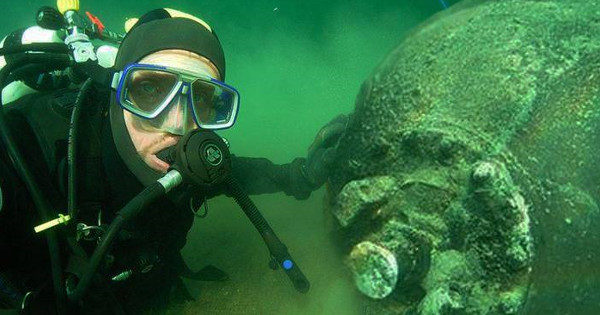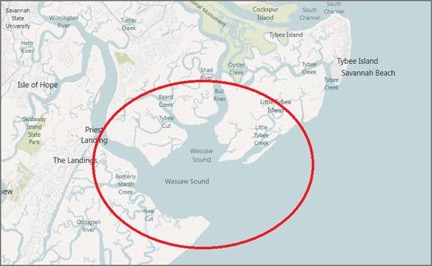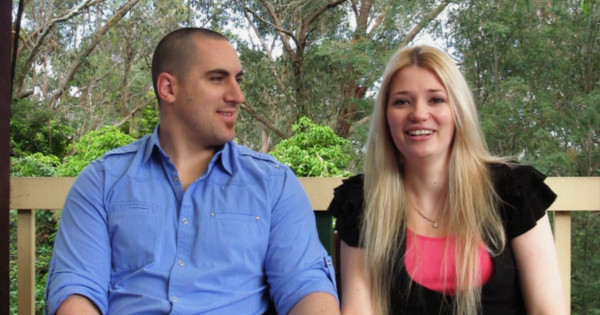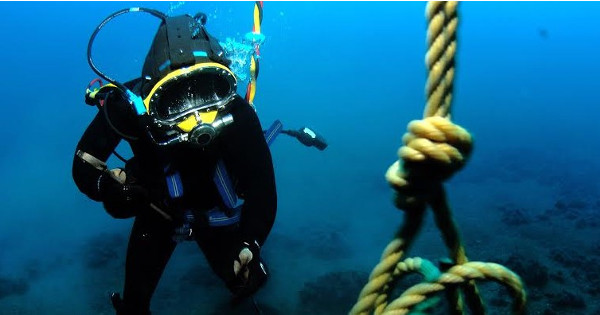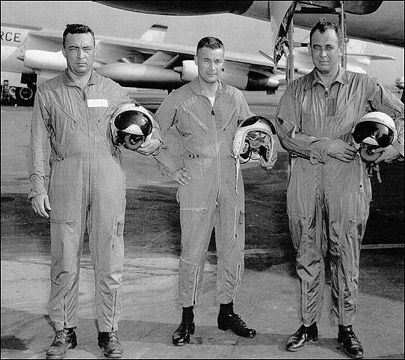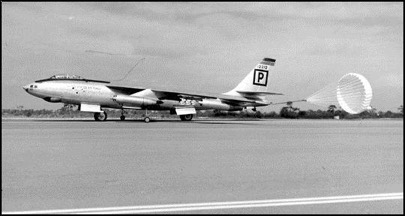Savannah, GA: A couple of tourists from London, Ontario in Canada made a surprising discovery while scuba diving in Wassaw Sound recently, a small bay located off the southern shores of Typee Island, GA. Jason Sutter and Christina Murray were admiring the marine life of the area when they stumbled upon a Mark 15 thermonuclear bomb that had been lost by the United States Air Force more than 57 years ago.
The couple from London, Ontario, was on a two week vacation in Georgia and Florida to practice their favorite hobby, scuba diving, when they decided to dive near the shores of Tybee Island. While admiring the plants and fishes near the sea floor, they noticed a large cylindrical item partially covered by sand. They investigated the object and found out that it was actually a sort of bomb or missile, so they decided to contact the authorities.
“I noticed an object that looked like a large metal cylinder, which I thought was an oil barrel” says Jason Sutter. “When I dug it up a bit, I noticed that it was actually a lot bigger and that there was some writing on the side. When I saw the inscription saying that it was a Mk-15 nuclear bomb, I totally freaked out. I caught Chritina by the arm and made signs to tell her we had to leave. We made an emergency ascent, went back to shore and then we called 911.”
The couple is still shocked after their frightening discovery and say they will avoid diving for the rest of their trip.
Rapidly understanding the gravity of the situation, the 911 operator contacted every possible emergency service, including the coast guard and the military, leading to the deployment of more than 20 ships and 1500 men in the area. Using the GPS coordinates given by the couple, they rapidly located the powerful 3.8 megaton bomb.
An unmanned submarine was sent to determine the condition of the bomb, before explosive experts were sent to disarm it. Fortunately, the thermonuclear weapon produced in 1955 seemed in sufficiently good shape for a team of Navy seals to try to defuse it. They successfully deactivated the warhead after hours of strenuous work, allowing the rest of the bomb to be removed.
The delicate recovery operation took more than 48 hours, but the bomb was finally recovered and transported to Mayport Naval Station in Florida. A full set of tests and analysis will now be performed on the warhead to evaluate its actual state and the possible ecological and health hazard that its presence in the bay for 57 years could represent.
Navy explosive ordnance Disposal technicians spent nearly five hours working on the warhead before they were able to extract the detonator and the uranium core of the weapon, allowing the fuselage to be moved.
The federal and state authorities were well-aware that a nuclear warhead had been lost in the area in the 1950′s and had never been recovered, but no efforts had been done for years to recover it. It was lost on the night of February 5, 1958, when a B-47B Stratojet bomber assigned to Homestead AFB, FL carrying the 7,600-pound hydrogen bomb on a simulated combat mission at 36,000 feet altitude off the coast of Georgia collided with an F-86L-50 Saberjet fighter assigned to the 444th FIS, Charleston AFB, SC.
The rader scope on the F-86L fighter was defective and did not show the B-47B bomber on its screen causing the pilot Lt. Clarence A. Stewart, to ascend directly into Richardson’s aircraft. The collision ripped the left wing off the F-86H and severely damaged the starboard wing of the B-47B bomber, tearing off the starboard fuel tank and leaving its number six engine partially dislodged.
The bomber’s pilot, Maj. Howard Richardson, was instructed by the Homestead Air Force Base in Florida to jettison the H-bomb before attempting to land. Richardson dropped the bomb into the shallow waters of Wassaw Sound, near the mouth of the Savannah River, where he believed the bomb would be swiftly recovered.
The crew of the B-47B bomber were (from left) pilot, Maj. Howard Richardson; co-pilot, 1/Lt. Robert J. Lagerstrom and radar navigator, Capt. Leland Woolard. Richardson’s cool thinking in the cockpit helped prevent a possible catastrophic crash of the plane.
Major Richardson was instructed to make an emergency landing at the nearest SAC base, Hunter AFB, in Savannah, Georgia. He made a single approach at high speed to keep the dangling engine pod from dragging on the runway, touching down at ~180 knots. Brakes were applied and braking chute deployed. The plane skipped off the runway, then settled. The airframe was written off.
Lieutenant Stewart ejected from the F-86L at altitude, experiencing a 20 minute descent before landing in a swamp near Estill, SC, suffering from frostbite and exposure before being rescued four hours later. He spent several weeks recovering in a hospital in Charleston, S.C. The fuselage of the F-86L-50 impacted near Sylvania, Georgia.
For the following six weeks, the Air Force looked for the bomb without success. Underwater divers scoured the depths, troops tromped through nearby salt marshes, and a USN blimp hovered over the area attempting to spot a hole or crater in the beach or swamp. The search was finally abandoned and the bomb remained hidden for more than 57 years until recently when the (unlucky) couple stumbled upon it.

